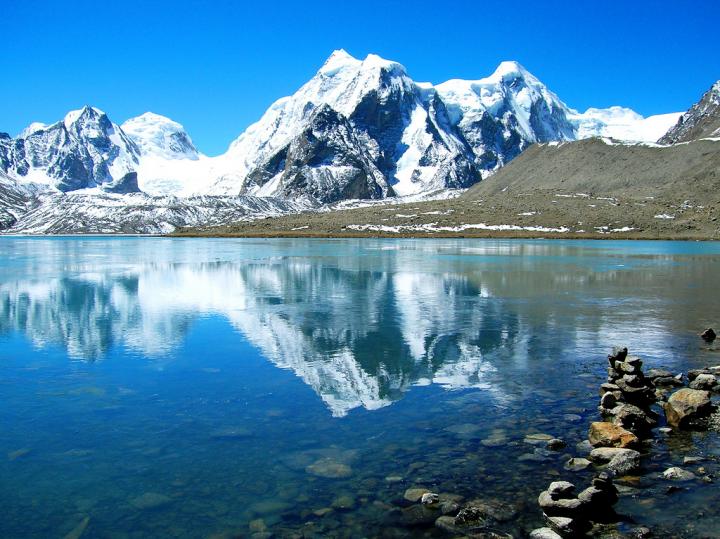Sikkim
Sikkim, a small yet enchanting state located in the northeastern region of India, is a land of breathtaking landscapes, rich culture, and profound biodiversity. Bordered by Nepal to the west, Bhutan to the east, Tibet to the north, and the Indian state of West Bengal to the south, Sikkim is a natural gem set against the backdrop of the majestic Eastern Himalayas.
One of Sikkim's most notable features is its unparalleled natural beauty. The state is home to a vast array of flora and fauna, with over 4,000 species of flowering plants, 600 types of orchids, and diverse wildlife including the red panda—Sikkim’s state animal. The landscape varies from lush subtropical forests in the lower altitudes to alpine meadows and towering snow-capped peaks in the higher reaches. Dominating the skyline is Kangchenjunga, the third-highest mountain in the world and a revered symbol of the region’s natural splendor.
Culturally, Sikkim is a unique blend of different traditions, influenced by its indigenous Lepcha people as well as the Bhutias and Nepalis who make up significant parts of the population. This diversity is reflected in the state’s language, customs, festivals, and religious practices. Buddhism and Hinduism are the predominant religions, and the state is dotted with numerous monasteries, such as the iconic Rumtek Monastery and the ancient Pemayangtse Monastery. These sacred sites not only offer spiritual solace but also showcase the region’s exquisite architecture and historical significance.
The capital city, Gangtok, serves as the cultural and economic hub of Sikkim. Perched on a mountain ridge at an altitude of approximately 5,500 feet, Gangtok offers panoramic views of the surrounding hills and valleys. The city is known for its vibrant markets, traditional crafts, and bustling food scene that includes local specialties such as momos, thukpa, and the fermented beverage, chaang.
Sikkim is also a leader in environmental sustainability. It is India’s first fully organic state, with agricultural practices that avoid chemical fertilizers and pesticides, supporting both environmental health and local farmers. Additionally, Sikkim has been lauded for its cleanliness and eco-friendly policies, making it a model for sustainable tourism and development.
Adventure seekers find Sikkim appealing for activities such as trekking, mountaineering, river rafting, and paragliding. The renowned Goecha La trek, which provides a close view of Kangchenjunga, is particularly popular among trekkers.
In summary, Sikkim is a harmonious blend of natural beauty, cultural richness, and progressive environmental practices. Whether exploring its high-altitude passes, visiting serene monasteries, or immersing oneself in local traditions, Sikkim offers an unforgettable experience steeped in wonder and tranquility.




